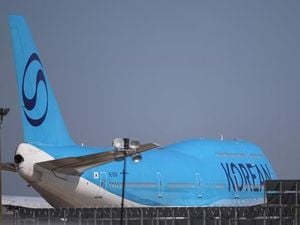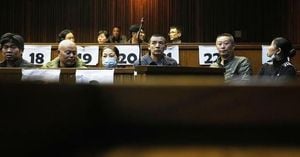U.S. President Donald Trump has never been shy about touting his achievements, but in recent weeks, his boasts have reached new heights—especially when it comes to his self-proclaimed peacemaking prowess. On August 18, 2025, as the White House prepared to host a summit with Ukrainian President Volodymyr Zelenskiy and several European leaders, Trump declared, “I’ve solved six wars in six months.” The next day, he upped the ante: “I’ve solved seven wars. We ended seven wars.”
According to Axios and Fox News, the White House provided a list of conflicts Trump claims to have ended: Armenia and Azerbaijan, Democratic Republic of Congo and Rwanda, Israel and Iran, India and Pakistan, Cambodia and Thailand, Egypt and Ethiopia, and Serbia and Kosovo. The administration’s confidence in these claims is matched only by its campaign to see Trump awarded the Nobel Peace Prize—a campaign that has drawn both praise and skepticism at home and abroad.
But how much substance lies behind these bold assertions? The answer, it turns out, is as complex as the conflicts themselves.
A Patchwork of Ceasefires and Claims
Let’s start with the recent White House summit. Trump welcomed Zelenskiy and European dignitaries in what was billed as a decisive moment for peace in Ukraine. Just days earlier, Trump had traveled to Alaska for talks with Russian President Vladimir Putin, aiming to broker an end to Russia’s invasion. “I want to try and get to heaven, if possible,” Trump quipped on Fox News. “If I can get to heaven, this will be one of the reasons.”
Yet, as BBC News and Reuters have reported, the reality on the ground is far more complicated. In the case of Armenia and Azerbaijan, Trump hosted leaders Nikol Pashinyan and Ilham Aliyev at the White House in early August 2025 to sign a preliminary peace deal. Both leaders pledged to back Trump’s Nobel nomination and even named a new transit corridor the “Trump Route for International Peace and Prosperity.” However, the long-standing dispute over Nagorno-Karabakh remains unresolved, and neighboring powers like Iran and Russia have voiced strong opposition, fearing a shift in the region’s balance.
“The American deserves the Nobel,” Armenian Prime Minister Pashinyan said, while Aliyev lauded Trump for bringing “peace to the Caucasus.” But Iranian President Masoud Pezeshkian flew to Armenia on August 18 to register his government’s concerns, underscoring how tentative the peace truly is.
From Africa to South Asia: Mixed Results and Lingering Violence
The Democratic Republic of Congo and Rwanda have endured decades of violence, with over eight million dead since the early 1990s. In June 2025, a peace agreement was signed at the White House between Congolese forces and the Rwandan-backed M23 rebels. But according to Axios and BBC News, both sides have accused each other of violating the pact almost immediately, and violence continues. The United Nations recently reported that another rebel group killed at least 52 civilians in the Congo, with the death toll expected to rise.
In South Asia, the story is similarly fraught. India and Pakistan have a long history of conflict, particularly over the disputed Kashmir region. The latest flare-up in May 2025 ended with a shaky ceasefire, but Indian Foreign Minister Vikram Misri insisted in mid-June, “There was no U.S. mediation between India and Pakistan.” Despite Trump’s claims to the contrary, India’s government has been clear: “India has not accepted mediation in the past and will never do.” The violence, meanwhile, has not entirely ceased.
Tariffs, Trade, and the ‘Peacemaker-in-Chief’ Persona
Trump’s approach to peacemaking often involves economic pressure. As he explained on Fox News, “I deal with all of the countries for trade. And while I have them on the phone… if we’re doing trade with one or both of them, I say, we’re not going to do a deal unless you make peace.” This tactic was evident in the July 2025 ceasefire between Cambodia and Thailand, where Trump refused to negotiate tariff reductions unless the two countries ended hostilities. The ceasefire, however, proved fragile—just two days after the presidents posed for cameras in Malaysia, border tensions flared anew, and China called for a permanent solution.
Trump’s methods have drawn both criticism and praise. Republican Congressman Derrick Van Orden called him the “peacemaker-in-chief” after the Israel-Iran ceasefire at the end of June 2025. That conflict, dubbed the Twelve-Day War, ended after Trump announced a ceasefire following U.S. bombings of three Iranian nuclear facilities. Israeli Prime Minister Benjamin Netanyahu nominated Trump for the Nobel Peace Prize, saying the U.S. president was “forging peace as we speak, one country and one region after the other.” Trump responded, “Coming from you in particular, this is very meaningful.”
Yet, as The Times of Israel and Reuters report, Iran’s leadership has denied any formal ceasefire or agreement exists. Netanyahu, meanwhile, faces war crimes charges at the International Criminal Court, and the Gaza conflict continues with mounting civilian casualties and international condemnation.
Old Conflicts, New Narratives
Some of the wars Trump claims to have ended began long before his presidency. The dispute between Egypt and Ethiopia over the Grand Ethiopian Renaissance Dam, for example, saw U.S.-brokered negotiations in 2020 that ultimately failed. The dam was completed without violence, but Egypt continues to object and seek international support. Similarly, the Serbia-Kosovo conflict saw a partial economic agreement signed in Washington in 2020, but tensions remain high. In March 2025, NATO Secretary-General Mark Rutte urged both sides to “show flexibility, make the necessary compromises, and focus on the long-term gains.”
Trump’s narrative, however, is unwavering. “I’m averaging about a war a month,” he boasted in July. “I am proud to be the president of peace.” In interviews, he’s cited the “decimation of [Iran’s] nuclear arsenal” and claimed to have prevented a “big time war” in the Balkans simply by leveraging trade deals. Yet, as PolitiFact and Axios have noted, the facts on the ground often do not match the rhetoric.
The Nobel Peace Prize Campaign
Trump’s pursuit of the Nobel Peace Prize has become a running theme. In July 2025, he reportedly called Jens Stoltenberg, former Norwegian prime minister and NATO secretary general, to discuss tariffs—and, according to Dagens Naeringsliv, the prize itself. “I will not go into further detail about the content of the conversation,” Stoltenberg told Reuters. Trump, for his part, has been candid: “No, I won’t get a Nobel Peace Prize no matter what I do… but the people know, and that’s all that matters to me!”
Supporters and skeptics alike have weighed in. Journalist Frank Bruni quipped in The New York Times, “Give Trump the Nobel! And an Emmy. And an Oscar.” But the decision rests with a five-member Norwegian committee, and the Nobel Peace Prize is not typically awarded for fragile or partial truces.
As the world watches, Trump’s claims—and the disputes over their validity—continue to dominate headlines. Whether he will ultimately be recognized as a peacemaker or a master of self-promotion remains to be seen, but his campaign for the Nobel Peace Prize has certainly ensured that his foreign policy legacy, for better or worse, will be fiercely debated for years to come.





